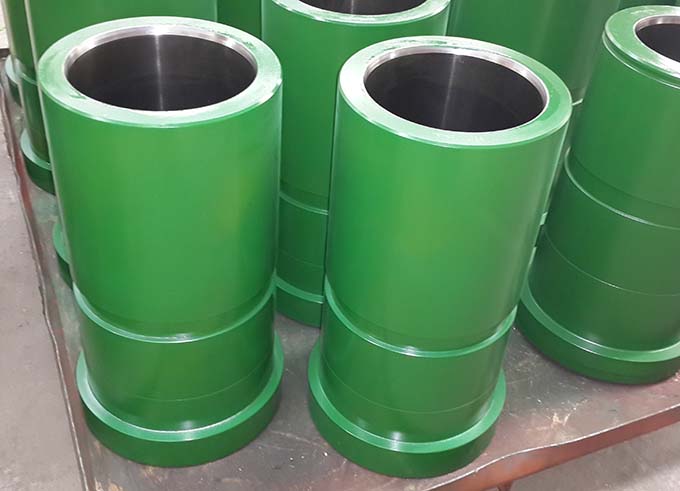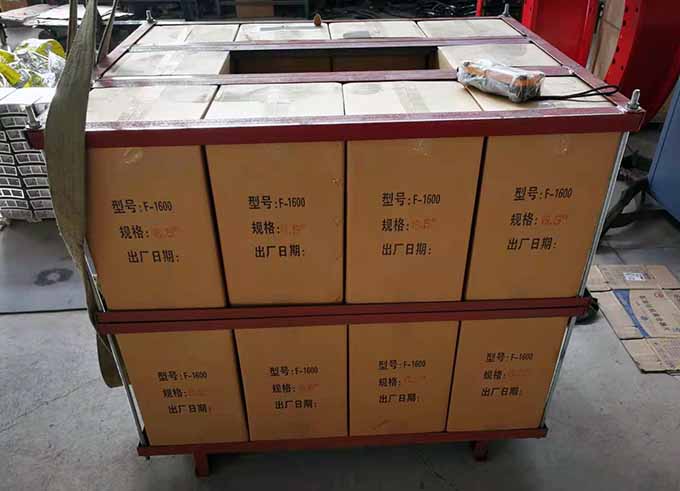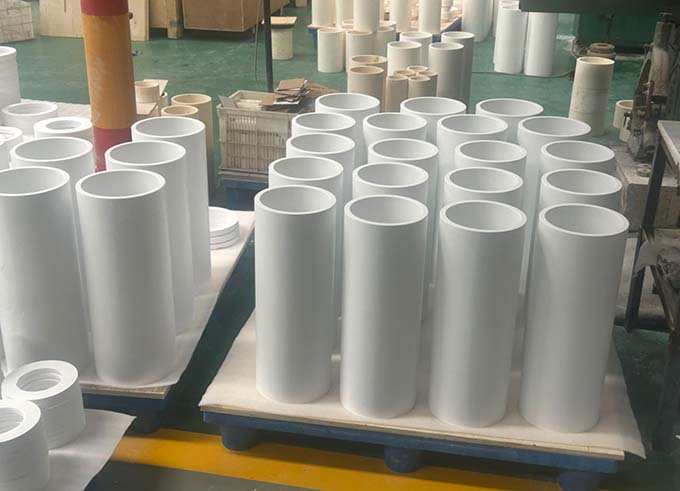Repair of Mud Pump Liners
Oct 22, 2023
Cylinder liner is one of the main wear parts of drilling mud pump, which is often caused by serious abrasive wear and erosion wear to increase the inner diameter, and gradually form a large gap with the piston, resulting in mud leakage and pump pressure drop. At present, most of the cylinder liners used in oil fields are bimetal cylinder liners, although its inner layer is made of high chromium cast iron with high wear-resistant coating, but the service life is only 400~600 hours, and about 4500 pieces are consumed in Liaohe oilfield alone every year. The potential of expensive high chromium cast iron materials has not been fully realized. In the spirit of increasing revenue and saving expenditure, we have been carrying out trial repair of the scrapped cylinder liner of the 3NB-800 pump since February 1988. For example, its inner diameters of 130 mm and 140 mm were changed to 140 mm and 150 mm respectively. A total of 300 liners have been repaired and tried to be used in the Liaohe oilfield. The trial results show that its life span is as much as 500 hours,
This is equivalent to the service life of a new liner, while the repair cost is only 50% of the price of a new liner.
At present, there are four kinds of cylinder liners 130, 140, 150 and 160 mm commonly used in Liaohe Oilfield, and there is a high chromium cast iron with a thickness of 6 ~ 8 mm on the inner diameter surface. Usually, after the inner diameter is worn by 0.5~0.8mm, the cylinder liner fails. From this, it is possible to explore the potential of high-chromium cast iron and transform the obsolete cylinder liners into new cylinder liners with a larger inner diameter, as following;
1. Preparation before repair
( 1 ) Carefully select those centrifugally poured high chromium cast iron layers with uniform thickness from the waste cylinder liners, and in the inner diameter reprocessing and reheat treatment, it is possible to meet the requirements of technical conditions as repair objects.
( 2 ) Seal the repaired cylinder liner for cleaning, and use sandpaper or wire brush to remove rust spots and dirt on the inner and outer surfaces.
( 3 ) According to the technical requirements, repair welding is carried out on the defective parts of the outer surface and end of the cylinder liner.
2. Repair procedure
There are two types of repair processes, one is to machine after heat treatment, and the other is to machine directly without heat treatment.
(A) Method of machining after heat treatment
(1) Select 130, 140, 150 mm cylinder liners with a layer thickness of 6~8 mm and place them in the furnace for protection annealing. When annealing, the cylinder liner should be placed upright in the heating furnace, and its stop end should be up. The hardness after annealing should be HRC 30~35.
(2) After annealing, the machining process is carried out according to the inner diameter size requirements of the "new cylinder liner", and the grinding amount is left (the usual grinding allowance is 0.4 mm.
(3) Protective quenching after machining processing, tempering should be carried out immediately after quenching, and the time of intermediate parking should not exceed 24 hours. The hardness after tempering should reach HRC60~64.
(3) The inner diameter of the cylinder liner after tempering is ground and honed to meet the requirements of the drawing.
(B) Method of direct machining without heat treatment
The cylinder liner that has undergone hardness test of HRC60 or more is directly turned by special tools, and the cutting speed is controlled during procedure:
At 10~20 meters per minute, the passing amount is 0.3~0.6 mm per revolution, the cutting depth is 0.5~1.0 mm, and the grinding amount is left. Its inner diameter is finally ground and honed to meet the requirements of the drawing. The cylinder liner repaired by the above method should be painted and oiled after passing the inspection according to the technical requirement, and packaged for later use.
Read More





 Language :
Language : English
English Русский
Русский عربي
عربي
 GET A QUOTE
GET A QUOTE





 IPv6 network supported
IPv6 network supported